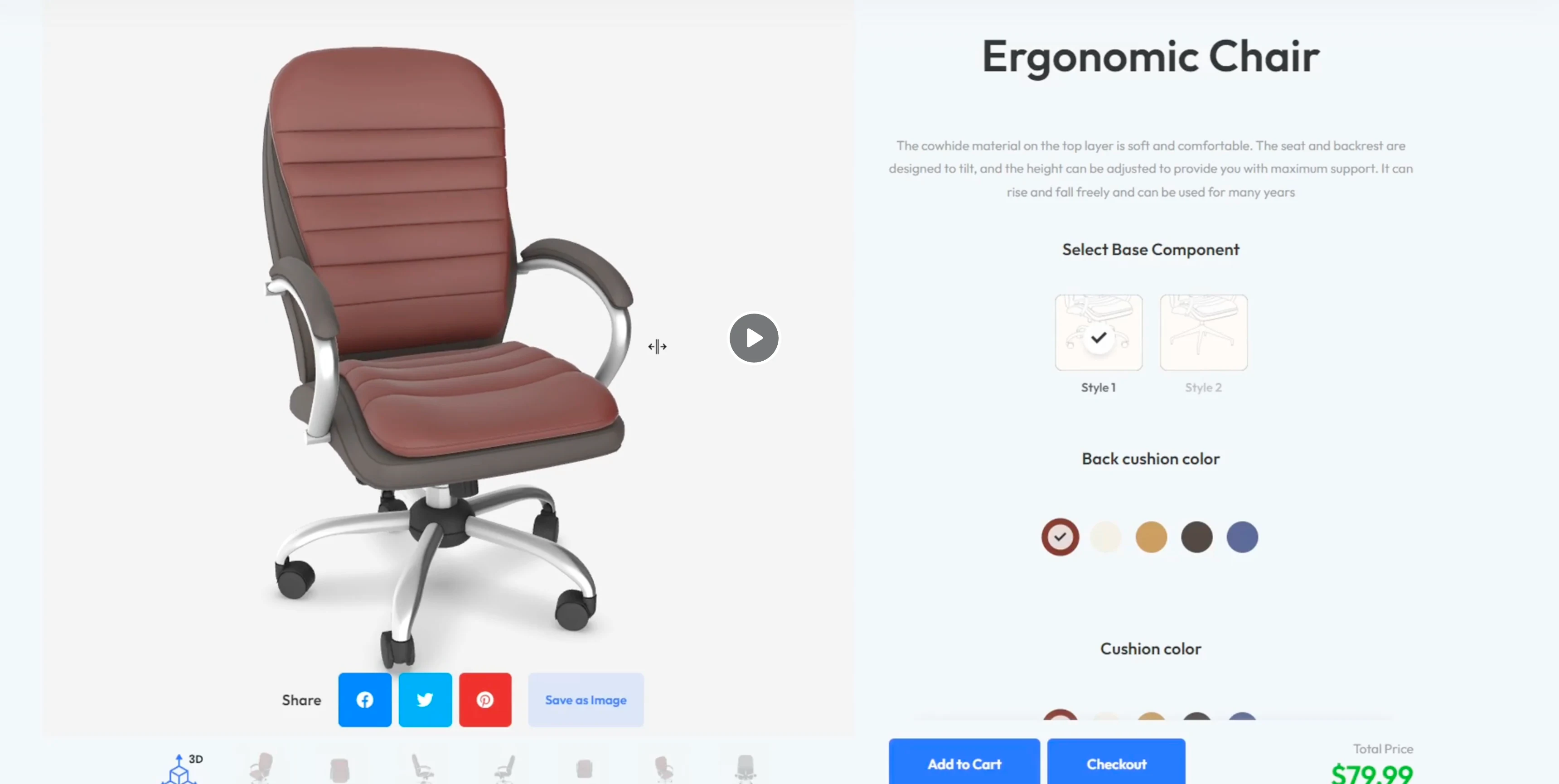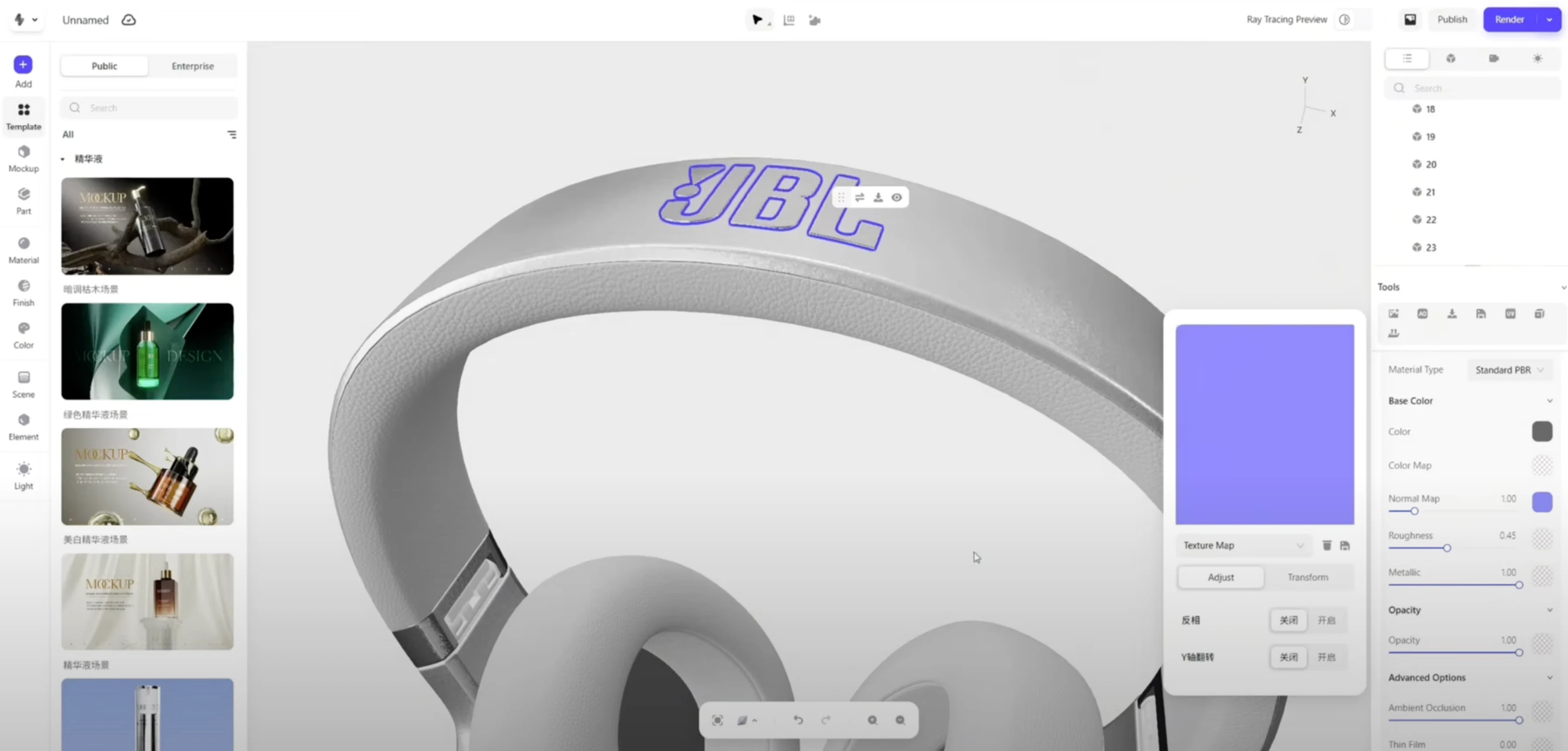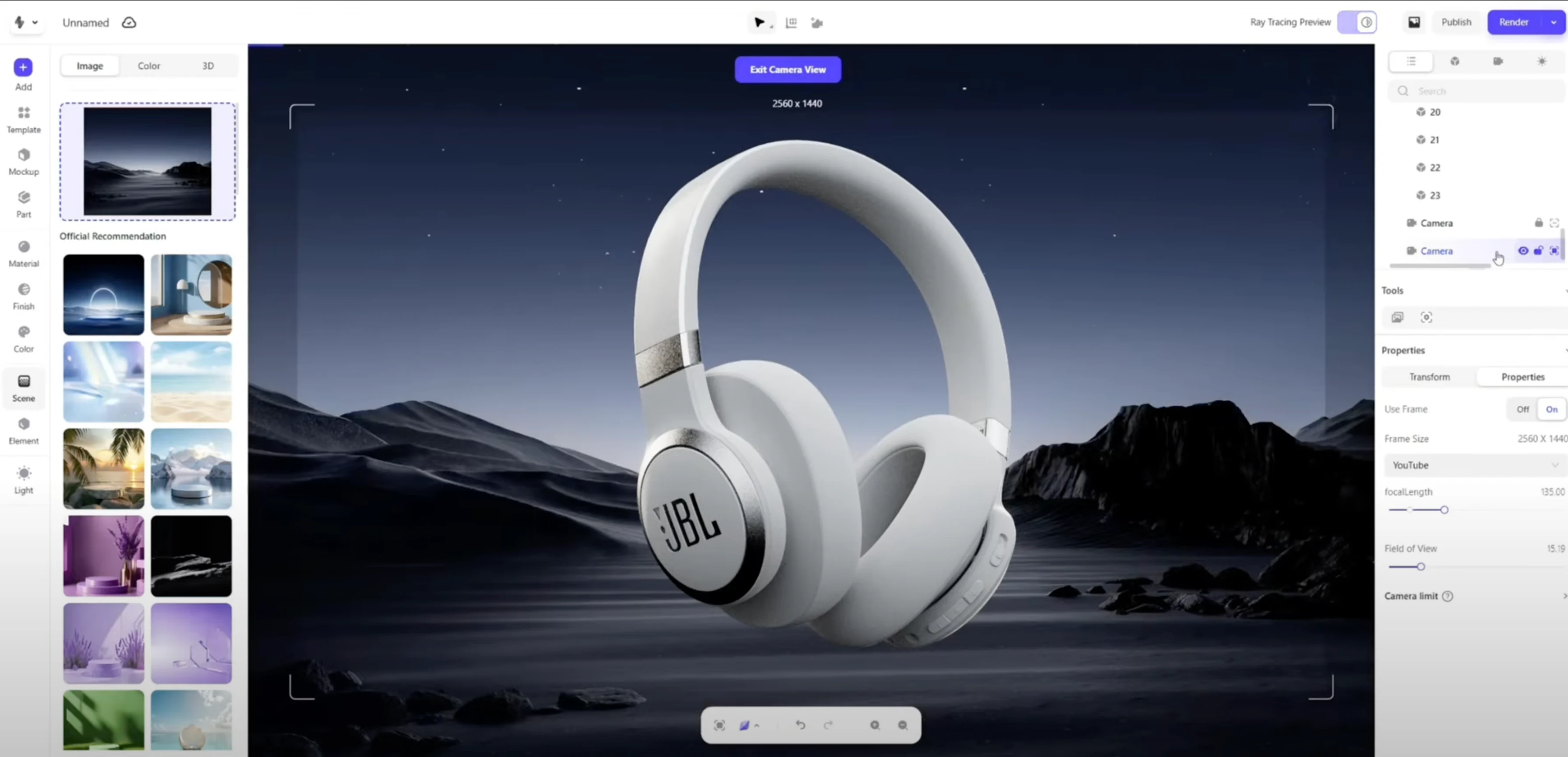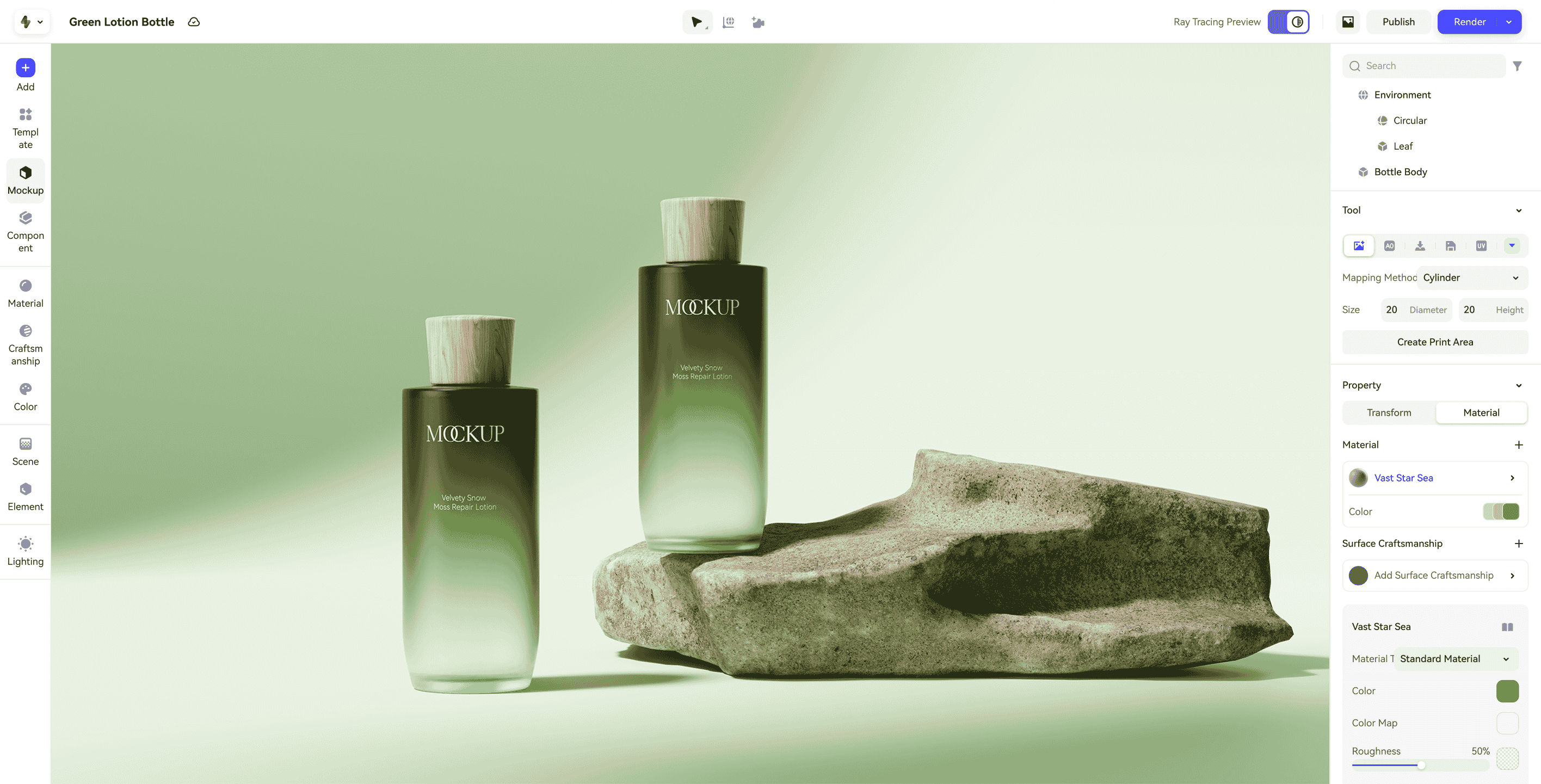Let’s be honest for a second. You just received the final shots from your expensive, week-long photoshoot. They look good—not great, but good enough. But then the Slack message arrives. The CEO has decided to launch a new color variant, effective immediately. A minute later, the marketing team pings you: they need a new set of images with a festive background for the upcoming holiday campaign.
Suddenly, those "good enough" photos are useless. Your budget is gone, your timeline is shot, and you're right back at square one.
This frustrating, expensive, and inflexible cycle is precisely why a quiet revolution is happening across the most successful e-commerce brands. They are moving away from the limitations of capturing reality with a camera and are instead learning how to create a perfect reality on demand.
This is the world of 3D product visualization. And it's changing everything.
So, What Exactly is 3D Product Visualization?
In the simplest terms, 3D product visualization is the process of using software to create a photorealistic, computer-generated image of a product from a 3D model.
But that definition is too technical. It misses the magic.
Let's use an analogy: Think of it as creating a perfect "digital twin" of your product.
Once this digital asset exists, you no longer need the physical item to create any marketing or sales image you can possibly imagine. That single file becomes your private, 24/7 virtual photography studio. Need a new color? Done in minutes. Need a different background? A few clicks. Need an impossible, gravity-defying shot for a social media campaign? No problem.
It’s a single asset that unlocks infinite visual possibilities, with no reshoots required.
Why 3D Visualization is No Longer a "Nice-to-Have"—It's a Business Imperative
For years, CGI and 3D rendering were seen as a luxury—something only large automotive or architectural firms could afford. Today, thanks to modern platforms, it has become an accessible and essential tool for any e-commerce brand that wants to compete. Here’s why.
Drastically Reduce Your Photography Costs
Let’s break down the real cost of a "traditional" photoshoot. It’s not just the photographer's day rate. It’s the studio rental, equipment hire, product shipping, insurance, paying for stylist and staff, and days of post-production retouching. And the most painful part? You have to pay for it all over again for every new product variant, every new campaign, and every new angle you forgot to get the first time.
The 3D visualization model flips this on its head. The primary investment is a one-time cost to create the 3D model. From that point on, generating a new image is incredibly cost-effective. A thousand-dollar 3D model can easily replace a sprawling $50,000 photoshoot budget over the course of a year. It's not just cheaper; it's a smarter, more scalable financial model.
Launch Products and Campaigns at Unthinkable Speed
The traditional product launch workflow is painfully linear. Design creates a product. Manufacturing makes a prototype. It gets shipped to a photographer. The photos are taken and retouched. Finally, weeks or months later, the marketing team gets the assets they need to start selling.
3D visualization destroys this bottleneck.
Marketing can work in parallel. Using the final 3D design files, they can create an entire launch campaign's worth of stunning visuals while the product is still being manufactured. Imagine having all of your website banners, social media ads, and product page images ready to go the moment your inventory lands in the warehouse. You can run pre-sale campaigns, A/B test different visual concepts, and hit the market with overwhelming force, weeks ahead of your competitors.
Measurably Increase Conversion Rates & Customer Confidence
The biggest challenge in e-commerce is bridging the gap between the screen and the customer's hands. They can't touch your product, feel its weight, or see how the light hits it. Standard, flat photos often fail to answer their most pressing questions, which leads to uncertainty and abandoned carts.
3D product visualization closes this gap. It provides a level of visual information that traditional photography struggles to match.
 360° Spins: Let users examine the product from every conceivable angle.
360° Spins: Let users examine the product from every conceivable angle. Detail Shots: Zoom in to show the texture of the fabric or the finish of the metal.
Detail Shots: Zoom in to show the texture of the fabric or the finish of the metal. Animations: Demonstrate how a product moves or assembles.
Animations: Demonstrate how a product moves or assembles. Cutaways: Reveal the intricate technology inside the product.
Cutaways: Reveal the intricate technology inside the product.
This depth of visual information does more than just look good; it builds trust. It answers questions before they are even asked and gives customers the deep confidence they need to click "Add to Cart."
 realishot-3d-configurator-chear-81ri12.webp
realishot-3d-configurator-chear-81ri12.webp
The 3D Product Visualization Workflow: From Blueprint to Banner Ad
The process might sound complex, but modern tools have made it more accessible than ever. The workflow can be broken down into four logical stages.
Step 1: Creating the 3D Model (The "Digital Twin")
This is the foundation of everything. The 3D model is the digital blueprint of your product, containing all its geometric data. This asset can be created in several ways, often by leveraging work that's already been done:
 From CAD Data: The most common method. Your product designers and engineers already have this.
From CAD Data: The most common method. Your product designers and engineers already have this. 3D Scanning: For objects with highly organic or complex shapes.
3D Scanning: For objects with highly organic or complex shapes. Polygonal Modeling: Creating the model from scratch, a common practice in digital entertainment and design.
Polygonal Modeling: Creating the model from scratch, a common practice in digital entertainment and design.
This is your one-time investment that powers every visual you will ever need.
Step 2: CMF Design (Giving the Model its Soul)
A 3D model is just a lifeless, grey sculpture. The artistry of CMF (Color, Material, Finish) is what gives it a soul. This is the stage where a designer, acting as a digital stylist, applies the materials.
 Headphone CMF Design
Headphone CMF Design
Is the speaker grille a woven fabric or a perforated metal? Is the casing a high-gloss plastic or a soft-touch matte black? Is the logo subtly embossed or printed with a chrome finish? This is where the product's story, brand identity, and perceived value are defined. For a deeper dive into this crucial step, you can explore our complete guide on What is CMF Design?.
Step 3: Scene Composition & Lighting (The Virtual Studio)
Once the product model looks perfect, it's time to place it in context. It's moved into a virtual scene. This can be as simple as a clean, white "infinity cove" for a classic Amazon look, or as complex as a photorealistic kitchen scene for a lifestyle shot.
 Scene Composition & Lighting
Scene Composition & Lighting
Then comes the light. Unlike a physical photoshoot where you're limited by real lights and bothered by unwanted reflections, a virtual studio gives you total control. You can place lights anywhere, control their intensity and color, and craft the mood perfectly to highlight your product's best features.
Step 4: Rendering & Post-Production (Creating the Final Image)
This is the moment of creation. The "Render" button is clicked.
 Product Visualization Rendering
Product Visualization Rendering
The software (or a powerful cloud platform like Realishot) acts like a virtual camera, calculating how every single ray of digital light bounces off the materials you've defined. It captures the reflections, the shadows, and the subtle textures, compiling it all into a final, pixel-perfect photorealistic image.
Where You Can Use 3D Product Visuals (The Possibilities are Infinite)
The true power of the "digital twin" is its incredible versatility. That single 3D asset is not just for one image; it's a content engine that can power your entire marketing ecosystem.
 Your E-commerce Product Pages: This is the obvious starting point. Create a complete gallery of hero shots, detail images, and 360° interactive viewers for your product pages on Shopify, BigCommerce, or any other platform.
Your E-commerce Product Pages: This is the obvious starting point. Create a complete gallery of hero shots, detail images, and 360° interactive viewers for your product pages on Shopify, BigCommerce, or any other platform. Interactive 3D Product Configurators: Let your customers become the designers. A 3D configurator allows them to change colors, materials, and features in real-time on your website. This is engagement on a whole new level and a proven tool for increasing both conversion rates and what customers are willing to pay.
Interactive 3D Product Configurators: Let your customers become the designers. A 3D configurator allows them to change colors, materials, and features in real-time on your website. This is engagement on a whole new level and a proven tool for increasing both conversion rates and what customers are willing to pay. Digital Marketing & Social Media Campaigns: Create scroll-stopping visuals for your ads that would be impossible or prohibitively expensive to capture with a camera. Show your product floating, disassembled in mid-air, or drenched in liquid gold. Your only limit is your imagination.
Digital Marketing & Social Media Campaigns: Create scroll-stopping visuals for your ads that would be impossible or prohibitively expensive to capture with a camera. Show your product floating, disassembled in mid-air, or drenched in liquid gold. Your only limit is your imagination. Augmented Reality (AR) Experiences: The very same 3D model can be used to power AR "view in your room" features on your website or app. This allows customers to place a true-to-scale digital version of your furniture or electronics in their own home, dramatically reducing purchase anxiety.
Augmented Reality (AR) Experiences: The very same 3D model can be used to power AR "view in your room" features on your website or app. This allows customers to place a true-to-scale digital version of your furniture or electronics in their own home, dramatically reducing purchase anxiety.
Conclusion: Stop Photographing, Start Visualizing
As a designer who has been in the trenches for years, I've lived the frustration. My teams would craft a beautiful product, only to be held back for weeks or months by the slow, cumbersome process of traditional photoshoots.
3D product visualization isn't just about creating cleaner, more flexible images. It is about fundamentally fixing a broken, expensive, and outdated process. It aligns your marketing capabilities with the speed and agility that modern e-commerce demands.
The question for your brand is no longer if you should adopt 3D product visualization. The question is, how quickly can you get started? It is rapidly becoming the non-negotiable standard for brands that want to grow faster, launch smarter, and build a more compelling and confident relationship with their customers.
Ready to see what a "digital twin" could do for your brand? Explore how you can create a universe of stunning product visuals without ever setting foot in a physical studio.
